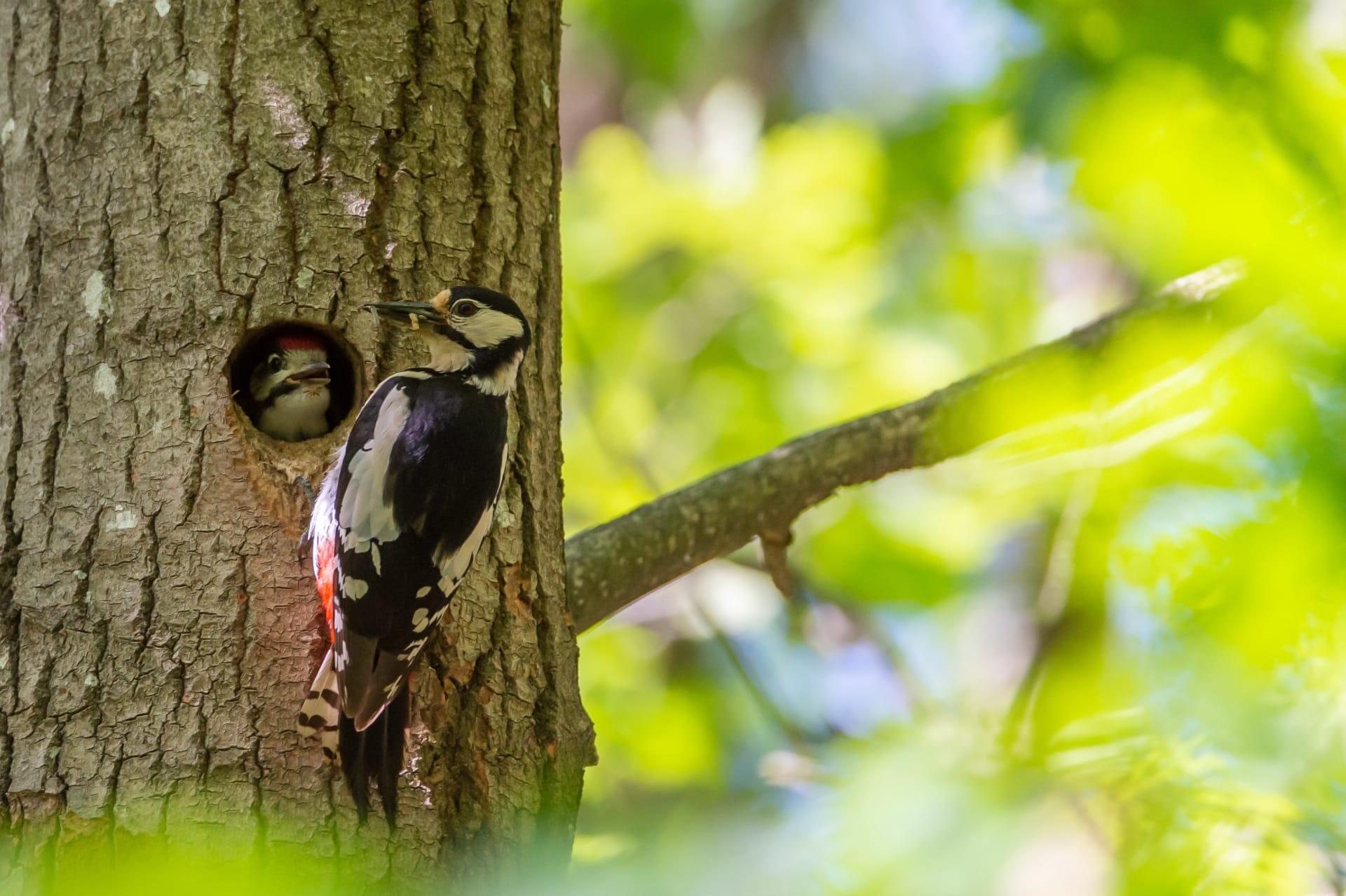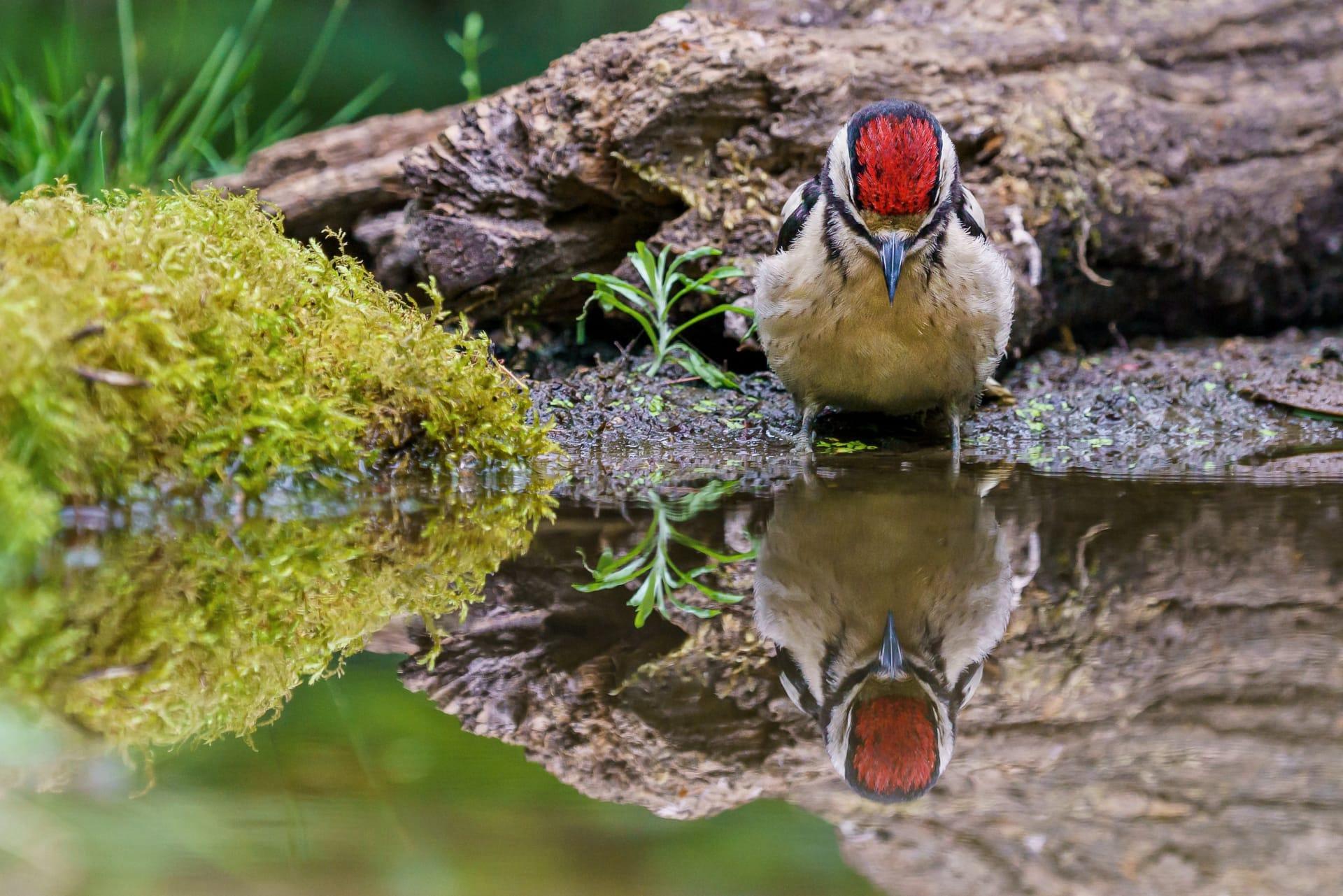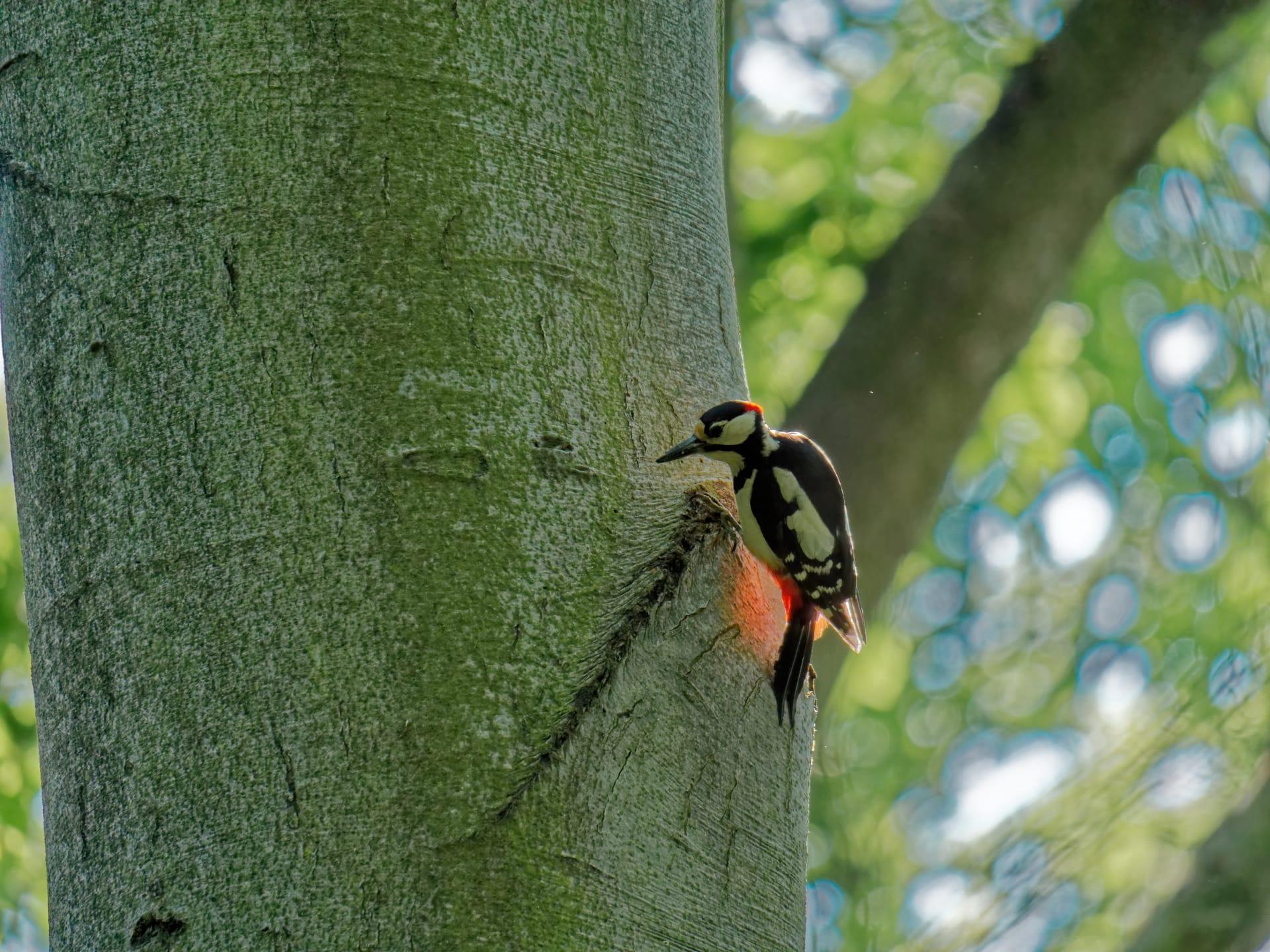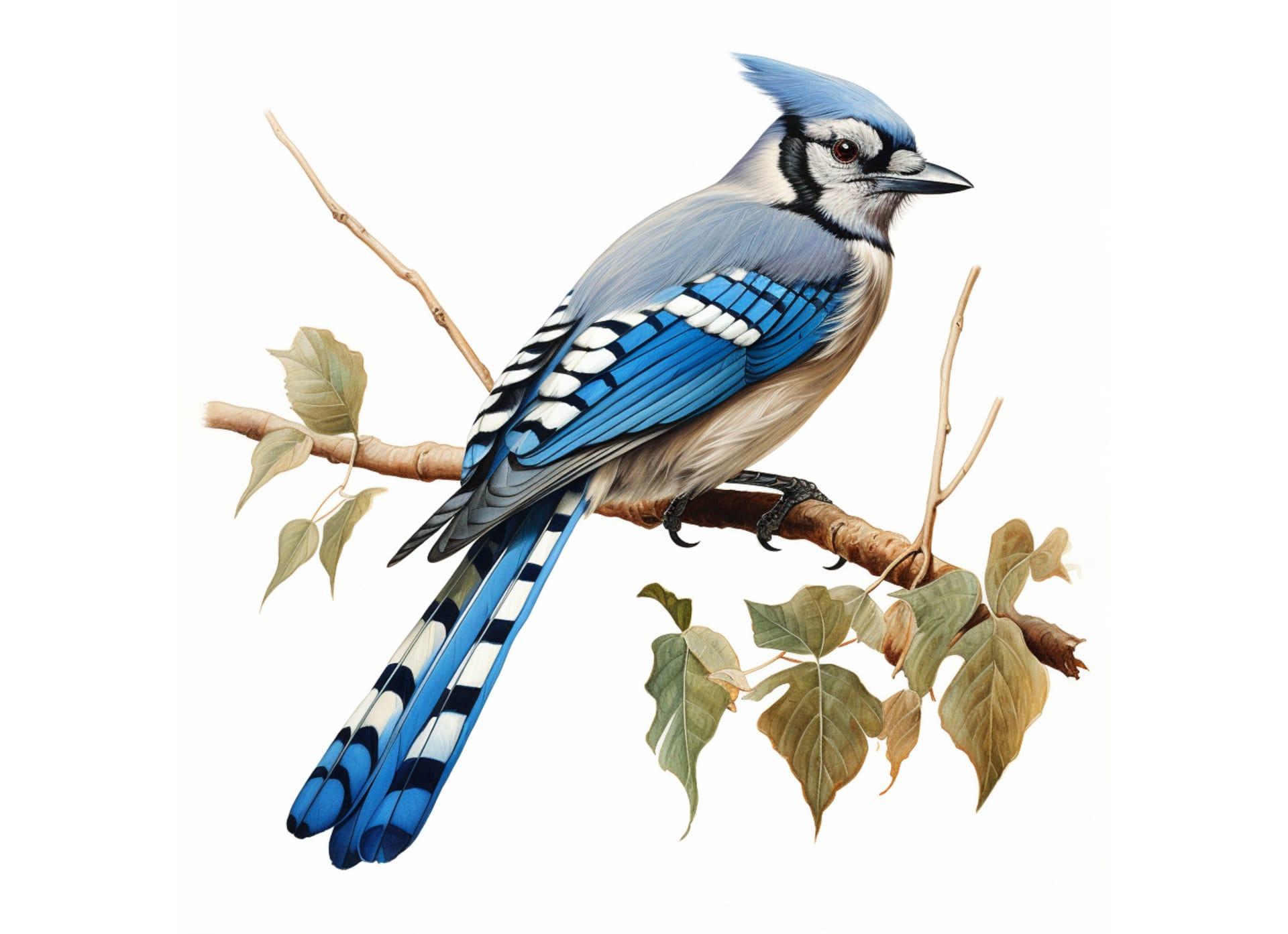Woodpecker Characteristics
- Home /
- Mini Encyclopedia /
- Animal /
- Woodpecker Characteristics
1
Woodpeckers, a fascinating avian species, are renowned for their unique physical characteristics. Varying in size, most woodpeckers measure between 6 to 24 inches in length. Their lifespan can be quite impressive, with many living up to 20 years in the wild. A standout feature of woodpeckers is their vibrant plumage, often featuring bold patterns of blacks, whites, and reds. However, it's their beak that truly sets them apart. This chisel-like tool is not just for pecking wood but is a marvel of nature's engineering.
The beak of a woodpecker is a special organ, perfectly designed for its lifestyle. It's long, strong, and pointed, ideal for drilling into trees. What's remarkable is how woodpeckers use their beaks to excavate holes in search of food like insects and larvae, and to create nesting sites. Their beaks are also uniquely adapted to absorb shock, protecting the bird's brain during rapid pecking. This is achieved through a special bone structure and cushioning material that mitigates the impact, allowing the woodpecker to peck at remarkable speeds without injury.

2
Question: How do woodpeckers avoid getting headaches from all the pecking?
Answer: This is a common query about woodpeckers, and the answer lies in their remarkable anatomy. Woodpeckers have a special adaptation in their skulls that protects them from the intense impact of pecking. Their brains are small and tightly fitted within their skulls, providing less room for movement and thus reducing the risk of brain damage. Moreover, they have a unique shock-absorbing structure at the base of the beak which cushions the impact. Additionally, their pecking method is also a factor. Woodpeckers peck in short, controlled bursts with breaks in between, which helps minimize any potential damage from the repeated impact.

3
Movement is a key aspect of a woodpecker's life. They are primarily known for their vertical movements along tree trunks. This is facilitated by their strong claws and stiff tail feathers, which provide support and balance. Woodpeckers can move swiftly up and down trees, often in a spiral pattern, as they search for food or carve out nesting holes.
When it comes to feeding, woodpeckers are skilled hunters. Their diet mainly consists of insects, especially beetle larvae found under tree bark. They use their sharp beak to chip away at the bark and their long, sticky tongue, which can extend up to three times the length of their bill, to extract insects from deep crevices. This tongue is not only long but also has barbs and is coated with a sticky saliva, making it an efficient tool for capturing prey.

4
Woodpeckers inhabit a variety of environments, but they are commonly found in wooded areas. They prefer forests with plenty of mature trees, as these provide ample food sources and potential nesting sites. Woodpeckers can adapt to different habitats, from dense forests to suburban areas with sufficient tree cover. Some species are even found in desert environments, as long as there are enough trees or wooden structures for nesting and feeding.
Reproduction is another fascinating aspect of woodpecker biology. They are known for their elaborate courtship rituals, which often involve drumming sounds created by rapid pecking on resonant surfaces. Woodpeckers are cavity nesters, meaning they excavate holes in trees to create a safe space for their eggs and chicks. Typically, the female lays between 2 to 5 eggs, and both parents share incubation duties. The young are altricial, meaning they are born blind and featherless, completely dependent on their parents for food and warmth.

5
Book: "The Woodpecker's Tale" by Douglas B. Wood, published in 1999 in the United States. This book delves into the life cycle, behavior, and habitat of various woodpecker species. Wood's engaging narrative combines scientific research with personal observations, providing an in-depth look at these birds' ecological importance and challenges they face in the wild.
Book: "Drummers in the Forest" by Anne M. Lisi, published in 2004 in Canada. Lisi explores the diverse world of woodpeckers, highlighting their unique characteristics and roles in forest ecosystems. The book is a blend of scientific information and vivid storytelling, making it an informative yet accessible read for those interested in avian biology and conservation.